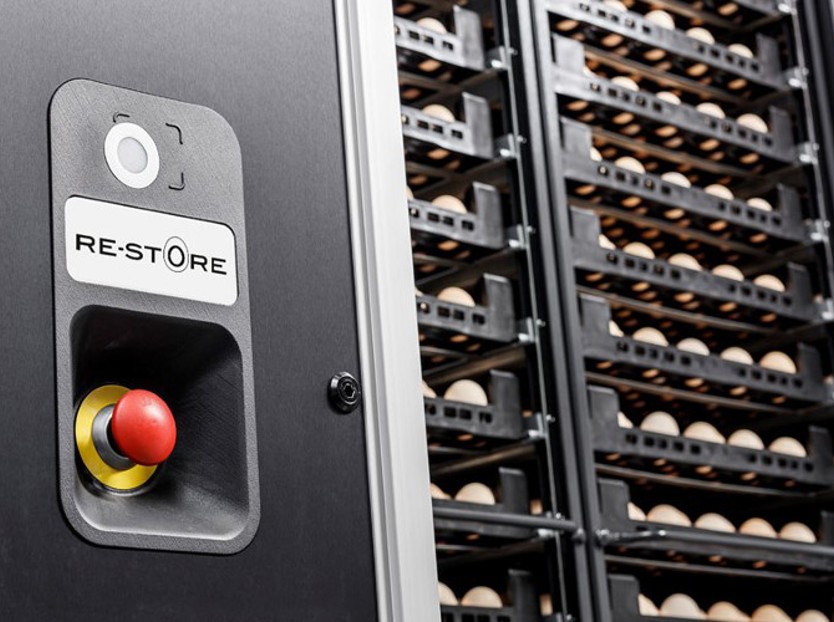Improving the hatch window is crucial to achieve better hatchability, higher chick quality and uniformity, and enhanced post-hatch performance. In this article, we have gathered three key advices based on studying the behaviour of the brooding hen that can shorten the hatch window and improve the performance of your chicks.
1. Heat treatment during egg storage
It is well-known that storing eggs for multiple days causes a decline in hatchability and egg quality. The longer you store eggs, the higher the losses will be. Stored eggs will have a higher rate of embryonic mortality between days 1 and 3 of incubation and need more hours to complete the incubation cycle time. When this happens, a number of live chicks are rejected at take-off because they hatched too late to be usable. Or the late-hatched chicks are not yet mature enough to go to the farms and will have difficulties to survive or grow optimally. The wider the hatch window, the greater the problem. Even when eggs are stored for shorter periods of time, they might have been subjected to different conditions at the farm, or they might have been mixed with other flock eggs to completely load the machines.
To narrow the hatch window, you should bring the long-stored eggs to a more uniform stage of early embryonic development before incubation starts. Also, when eggs are being stored for a short time, restoring them is beneficial as their variability will be reduced. There is an enormous potential in restoring the viability of stored eggs, and even improving day-old chick uniformity, with heat treatment before incubation. It is crucial, however, to accurately control the key incubation parameters. By using Petersime’s dedicated Re-Store incubator, you can be sure to achieve a consistent successful outcome as this dedicated incubator guarantees a controlled, gradual and precise heating and cooling of the eggs, which is needed to ensure highly consistent results.
2. Thermally balanced loading
Batch mixing is quite common in modern and large-scale incubators. However, you need to load the machines in a pattern that looks for maximum balance and uniformity. Understanding the airflow distribution in the incubators is crucial to achieve more thermal uniformity and a reduced hatch window.
In short, it is best practice to load the incubators according to the airflow distribution in combination with the metabolic heat production of the embryos. For example, for a machine configuration with central mixing fan and cooling/heating elements, put the batches with higher fertility or bigger eggs (those that produce more heat) in the position closest to the pulsator for better heat dissipation. Trolleys with eggs with lower heat production (e.g. with lower fertility) should be put in the middle of the incubator, while the eggs with intermediate heat production should go near the incubator walls. The consequences of a thermally unbalanced machine are greater variation and a wider hatch window.
Not only during the first 18 days of incubation, but also during the hatching phase should you pay attention to thermal balance. It is extremely important to take metabolic heat production into account when transferring the trolleys and positioning them in the hatcher.
3. Active embryo/environment interaction during hatching

Ideally, you would transfer eggs from the incubator to the hatcher at around 18 days. For some reason, however, it might be necessary to carry transfer at another time; hence, the embryo may have moved to a different stage of development, meaning the eggs may need precisely adjusted conditions to progress towards hatch. In Figure 1, you can see how the temperature of the embryo evolves through the various stages of the incubation process: vascular activity (blood that flows in the outer membrane) (1), chicken positioning (2), internal pecking (3) and external pecking (4).

For example, depending on the time of transfer, you will need to set another air temperature in the hatcher. To start the hatching phase under the best conditions, it is equally important to identify the periods in which the embryo is very responsive to environmental stimulus. Petersime’s Synchro-Hatch™ technology will do the triggering of temperature and CO2 stimuli for you, by detecting the right biological moment to support the embryos in the last steps before they hatch. Figure 2 shows the main interaction possibilities between environment and embryo.
For example, when the embryo is in an energy-saving period, air temperature should be reduced accordingly. Similarly, the CO2 levels applied on the correct period and magnitude will not cause any damage, but will trigger the embryo to respond naturally to internal and external pipping.
In summary
With good hatchery management and proper control over the following three key elements that influence the incubation and hatching process, you can reduce your hatch window and maximize your profit:
- Heat treatment during egg storage: bring embryos to a more uniform stage of development before incubation starts
- Thermally balanced loading: take the advantage of knowing the airflow in the machines and use it to minimize the existing differences in heat production among mixed flocks
- Embryo/environment interaction during hatch: monitor the right biological moment to support embryos with positive stimuli of temperature and CO2 during hatch
Petersime has the expertise and solutions to help you increase hatchability. Please don’t hesitate to contact us for more information.




